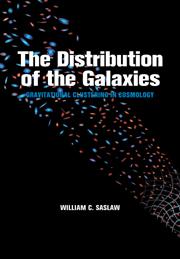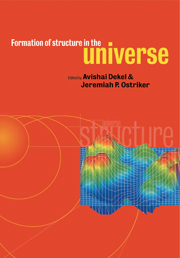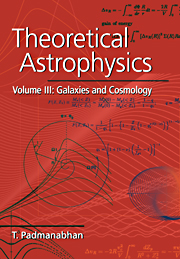The Distribution of the Galaxies
Contemporary astronomers continue to search for ways to understand the irregular distribution of galaxies in our Universe. This volume describes gravitational theory, computer simulations and observations related to galaxy distribution functions, which is a general method for measuring the distribution of galaxies and their motions. Coverage embeds distribution functions in a broader astronomical context, and includes other contemporary topics such as correlation functions, fractals, bound clusters, topology, percolation and minimal spanning trees. Throughout, theory, computer simulation and observation are carefully interwoven and critically compared, and key results are derived and the necessary gravitational physics provided. The book also shows how future observations can test the theoretical models for the evolution of galaxy clustering at early times in our Universe. This clear and authoritative volume is written at a level suitable for graduate students, and will be of key interest to astronomers, cosmologists, physicists and applied statisticians.
- Examines one of the leading problems in astronomical/cosmological research today
- The first book dedicated to the theory, computer modelling and observations related to galaxy distribution functions
- All key results are derived and the necessary physics provided to ensure the book is self-contained
Reviews & endorsements
"...an excellent and useful book...both attractive and reader-friendly...Cambridge University Press is to be congratulated on a splendid job of book-making. The quality of the book matches the quality of its contents." Physics Today
"Among the many merits of this book I would like to single out that observations, gravitational theory and computer simulations are skillfully interwoven...the book is ably written, smartly organized, suggestive and nearly up to date. I am therefore convinced that graduate students and researchers in cosmology will find it rather useful." Mathematical Reviews
Product details
February 2008Paperback
9780521050920
524 pages
242 × 170 × 28 mm
0.826kg
114 b/w illus. 1 table
Available
Table of Contents
- Prologue
- Part I. Historical:
- 1. Cosmology myths and primitive notions
- 2. First qualitative physics: the Newton-Bentley exchange
- 3. Glimpses of structure
- 4. Number counts and distributions
- 5. Seeds of grand creation
- 6. Clusters versus correlations
- 7. The expanding search for homogeneity
- Part II. Descriptions of Clustering:
- 8. Patterns and illusions
- 9. Percolation
- 10. Minimal spanning trees
- 11. Topology
- 12. Fractals
- 13. Bound clusters
- 14. Correlation functions
- 15. Distribution functions
- Part III. Gravity and Correlation Functions:
- 16. The growth of correlations: I. A fluid description
- 17. The growth of correlations: II. A particle description
- 18. General correlation properties
- 19. Computer simulations
- 20. Simulations and observations of two-particle correlations
- Part IV. Gravity and Distribution Functions:
- 21. General properties of distribution functions
- 22. Dynamics of distribution functions
- 23. Short review of basic thermodynamics
- 24. Thermodynamics and gravity
- 25. Thermodynamic formulation of the cosmological many-body problem
- 26. The functional form of b(n,T)
- 27. Derivation of the spatial distribution function
- 28. Properties of the spatial gravitational quasi-equilibrium distribution
- 29. The velocity distribution function
- 30. Evolution of the GQED
- Part V. Computer Experiments for Distribution Functions:
- 31. Spatial distribution functions
- 32. Velocity distribution functions
- Part VI. Observations of Distribution Functions:
- 33. Observed spatial distribution functions
- 34. Observed peculiar velocity distribution functions
- 35. Observed evolution of distribution functions
- Part VII. Future Unfoldings:
- 36. Galaxy merging
- 37. Dark matter again
- 38. Initial states
- 39. Ultimate fates
- 40. Epilogue
- Bibliography
- Index.







